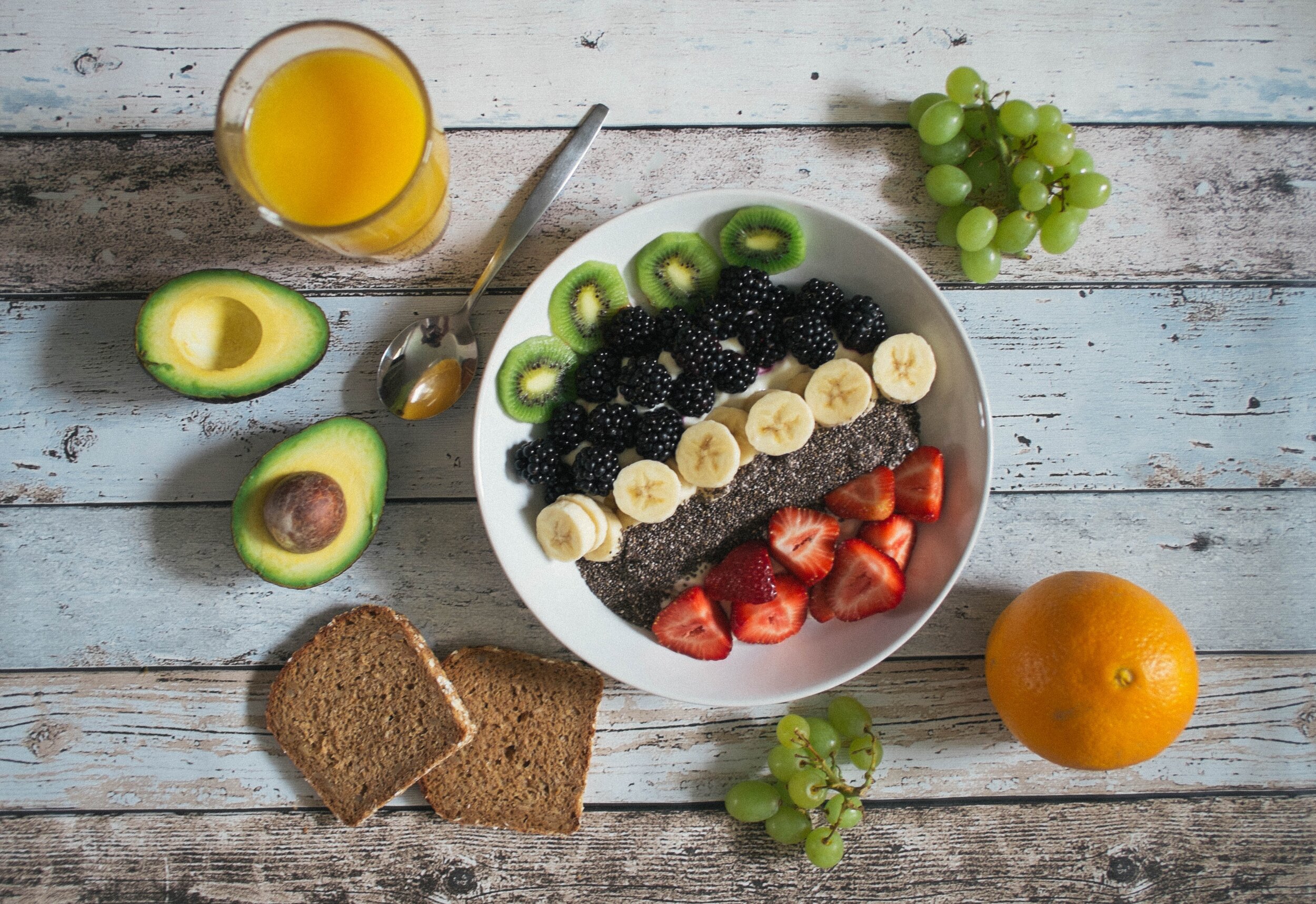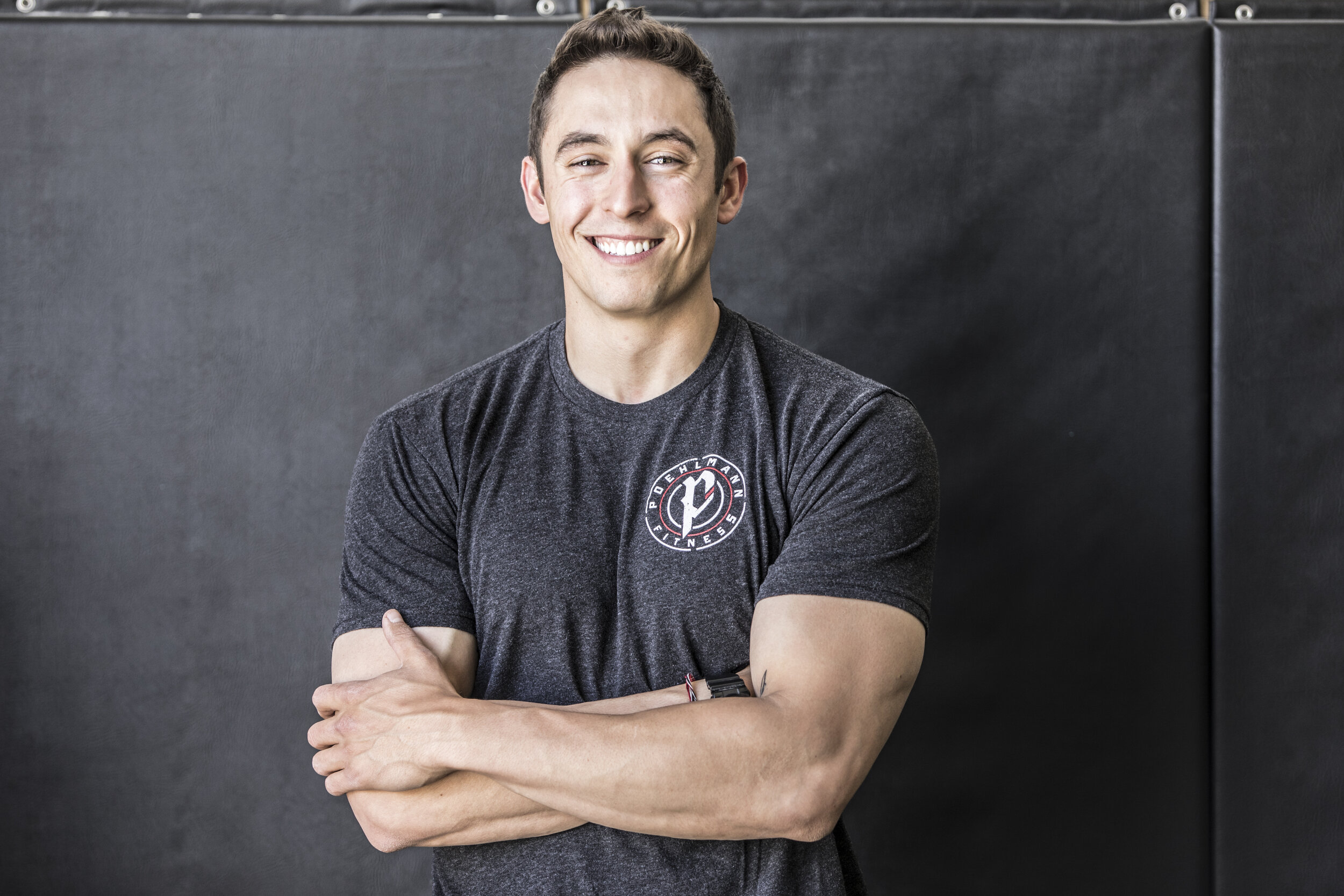
3 Fat Burning Myths That Need to Die
Don’t let these three myths keep you from losing extra body fat.
We’ve all wanted to lose some body fat at some point in our lives. It’s nearly everyone’s goal.
Because of that, the health and fitness space has always been putting out content to educate consumers on what they can do (and what they can buy) to help them lose that stubborn body fat. As more and more of that content gets pushed out, the odds of consumers getting misleading information increases drastically.
There are tons of myths out there. Some that don’t cause too much damage, and some that absolutely need to die because they are actually keeping people from reaching their fat loss goals.
MYTH #1: CARDIO IS THE BEST FORM OF EXERCISE FOR FAT LOSS
Does a cardio session burn a lot of calories? Absolutely. But that doesn’t mean it is best for fat loss.
To lose weight, we need to be burning more calories than we are eating. This weight loss may be water, fat, muscle, or a combination of them all. If we are lifting weights and eating enough protein, that loss of weight is more likely to be fat loss.
Well, if we need to burn more calories than we take in during the day, wouldn’t cardio be best because it burns the most amount of calories? Not quite. Although cardio is one of the better ways to burn lots of calories, it has its cons.
One of the amazing things about our design is that when we expose our body to a certain stimulus/environment (like doing cardio) our body adapts and becomes better at that stimulus/environment. Our adapts to cardio by becoming more efficient at burning calories. The more efficient it is at burning calories (burns fewer and fewer calories), the longer we can last.
In and of itself, this is a REALLY good thing. If I were out in the wild barely getting any food and traveling miles and miles, I would want to burn few calories to keep myself from dying. In modern life, this is not necessarily a good thing. Food is abundant (and a lot of it is calorie-dense and highly processed), and our lives are pretty sedentary. When you pair up readily available food, a sedentary lifestyle, and a slower metabolism, it is a recipe for fat gain.
Those that begin doing cardio on a consistent basis see results relatively quick, but find themselves hitting a wall not too long after. They quickly get to a point where they’re not losing fat the same way they did before. That is because their body has become more efficient (slower metabolism) at burning calories. When they hit that wall, they either need to workout even more and/or eat even less. There is only so little you can eat and only so much you can train. There must be a better way.
There is.
Just like you can make your metabolism slower, you can make your metabolism faster by lifting weights with the intention of getting stronger and building muscle. As you lift weights, your body will be come less efficient at burning calories. When it comes to losing fat in modern life, this is a great thing. You’ll burn more calories throughout the day. Your basal metabolic rate (the calories you burn at rest) will increase, which makes up over 60% of the calories you burn each day!
The key to losing fat is relying on strength-training to get you to your goal, and use cardio as a boost when you absolutely need it. Remember, cardio is most effective when you are least used to it.
MYTH #2: SMALLER MEALS BURNS MORE CALORIES THAN LARGER MEALS
The metabolism is one of the most complex things in this universe. It is really difficult to understand. Because of that, we’ve theorized a lot of things. One of them being the metabolism is like a furnace. You gotta keep the fire stoked to keep the wood burning.
This theory turned into the idea that if you eat more meals in the day, your metabolism keeps working and working and working leading to more and more calories burned. This isn’t really the case.
At the end of the day, weight loss and weight gain ultimately comes down to the amount of calories you burn vs. the amount of calories you consume. If you eat seven meals a day but you’re eating more than you need, you’re going to gain weight. If you’re eating two meals a day but you’re eating more than you need, you’re going to gain weight. The same is true for losing weight. You can have six meals a day or one meal a day. If you’re eating less than you need, you’ll lose weight.
There is a teenie tiny hint of truth in this myth. There are certain foods that require more calorie burn in order to digest. For example, protein takes more energy to digest than carbohydrates do. Therefore, having a diet that is a little higher in protein may help you burn more calories. But remember, if that increase in protein causes you to eat more calories than you need to lose weight, it’s a wash.
What I’ve taught my clients is that the method that helps you be the most consistent is the method that is best for you. If you need to eat 1800 calories per day to lose weight, eat the amount of meals that allows you to reach that goal and keep from going over. For some, that may be three meals, for others it may be five. What matters most is consistency. Consistency is king.
It doesn’t matter how many meals you eat in the day. Eat the amount of meals that allows you to reach your nutritional goals that are required for you to lose body fat.
MYTH #3: IN ORDER TO BURN BODY FAT, YOU NEED TO BE IN THE FAT BURNING ZONE
I hate this one the most.
Most health and fitness myths contain a tiny bit of truth. This is one of those myths.
The fat burning zone is something that was discovered a while ago when people found that the most body fat is burned for fuel when the heart rate is in a specific range. As a result, products like MyZone heart rate monitors came out to help people stay in the fat burning zone during their workouts.
In my opinion (as well as the opinion of many other professionals), these monitors are nothing but a distraction for those wanting to lose body fat. You see, there are ripple effects to things. When you tell people that they need to be in the fat burning zone to burn body fat, they begin worshipping the fat burning zone, and forget about everything else involved with fat loss.
Remember, burning fat comes down to calories in vs. calories out, but there are several factors that play a role in that energy balance such as the speed of the metabolism, hormones, and more. As a result of paying too much attention to the fat burning zone during workouts, people forget that they also need to track their food intake. They also don’t realize that getting their heart rate up into the “fat burning zone” requires intense cardiovascular effort. The more cardio is done on a consistent basis, the slower the metabolism gets. And calorie burning trackers don’t take this into consideration. It will eventually be telling them that they burned hundreds more calories than they actually did. And what’s the result? They eat 500 calories more because their watch told them that they burned that many calories during their workout. But in reality they burned 200, so they just ate 300 extra calories that they didn’t need. Add that up day over day, week over week, they could be gaining a pretty decent amount of extra body fat.
In my professional opinion, based on years of experience training hundreds of clients, the people who have the most success losing body fat are the ones focused on increasing their strength in the gym and keeping their calories where they need to be for fat loss. Both of these actions lead to a faster metabolism and better nutritional behaviors that will benefit them for the rest of their lives.
Those that have the least success are those that get obsessed with calorie trackers, fat burning zones, and the next fat loss fad that promises them the results they’ve always wanted.
THE TAKEAWAYS
Cardio may burn lots of calories, but only for the short term. Use strength training to speed up your metabolism for more successful long-term fat loss.
The amount of meals you eat in the day doesn’t matter. Do what allows you to be the most consistent in hitting your calorie and nutrient goals.
The fat burning zone doesn’t mean anything if you’re eating too many calories. Use your energy to pay attention to what matters most which is calories in vs. calories out.
ABOUT THE AUTHOR
Adam is a fitness professional, baseball fan, and cookie fanatic based in Fort Collins, Colorado. After hanging up the cleats, he found a strong interest in the human body and how it performs. Since then, Adam has been transforming lives through fitness in a fun and encouraging atmosphere. As an ACE CPT and Fitness Nutrition Specialist, he is constantly moved to help people improve in all walks of life.
WANT MORE FREE CONTENT?
Download any of our guides for FREE in the “free” tab at the top of the page.
The Best Arm Fat Burning Exercises
Want to tighten up those arms? Here’s what you can do to lose that stubborn fat around your arms.
Most of us would love to have better looking arms. So what exercises should we do to make our arms look leaner, tighter, and less flabby?
We need to perform the exercises that burn the most fat in our arms.
But, there’s just one problem.
No such exercises exists.
YOU CAN’T SPOT REDUCE, BUT YOU CAN SPOT PRODUCE
Despite what many marketing gimmicks have tried to sell you, you can’t use certain exercises to spot reduce fat on certain parts of your body. For example, doing crunches isn’t going to help you burn body fat around your tummy. The same goes for arms, doing an absurd amount of bench dips isn’t going to reduce body fat on the back of your arms.
You can’t spot reduce. Unless you get some sort of liposuction or other procedure, of course.
In order to understand why this is the case, let’s talk about the fundamentals of fat loss and fat gain, which comes from a difference in energy balance.
Our bodies use the calories from the food we eat as energy. When we burn more calories than we eat, that is called a calorie deficit, and we lose weight. When we eat more calories than we burn, that is called a calorie surplus, and we gain weight.
When we gain body fat, we store it in different areas depending on genetics, sex, hormone profiles, and more. Women tend to gain body fat easily around their hips, thighs, butt, and upper arms. Men tend to easily gain body fat around their midsection. The areas we tend to gain it first are the areas where we tend to lose it last. These are usually called our “stubborn” areas.
When we are in a energy deficit and we are telling our body to lose weight, our body will get rid of fat wherever it wants to. The stubborn areas are the last places where fat leaves. Continuing a protocol for a period of time to finally lose that stubborn body fat is challenging, and marketing companies know this. Therefore, they aim to sell on the idea that they finally have the exercises and equipment for those stubborn areas. But they don’t.
You have what it takes, though. And it’s just a matter of whether or not you really want to commit to doing what it takes to lose that body fat even in the most stubborn areas.
So, if you are in a state where your body is losing body fat (lifting weights, eating enough protein, and being in a calorie deficit), the fat on the back of those arms will finally leave.
But before you worry about trying to lose the most fat possible, you need to focus on something else that I believe is far more important.
And that, is muscle.
There’s a saying in the fitness space that goes like this: “You can’t spot reduce, but you can spot produce.” This means that although you can’t use certain exercises to lose fat in specific areas, you can use certain exercises to build up the muscles in those specific areas. And that is what will help you get that tighter, leaner, sexier look.
Underneath the fat on your body is muscle, and muscle is what gives your body great aesthetics. Muscle is what makes your arms look better. Muscle is what makes your butt pop. Muscle is the chisel to the marble that is your body.
The more muscle you have in your arms, the more shape and definition they will have. You can lose as much fat as you possibly can, but if you don’t have muscle underneath to show off, you’ll just look like someone who hasn’t eaten in the past two years. I’m not even talking about an absurd amount of muscle. No, you don’t need to look like a body builder. Even a little bit of muscle can completely change the way your arms look. Even small increases in muscle on your arms can be the difference between flabby Abby and lean Jean.
So before you even think about losing tons and tons of fat on your arms, prioritize building muscle to show off first.
You may not be able to use curls and dips to burn the fat on your arms, but you are most certainly able to use curls, dips, and more to build muscle on those arms of yours.
EXERCISES TO SPOT PRODUCE
Here is a list of some of the most beneficial muscle-building arm exercises:
Biceps
Chin-Ups (this exercise is primarily for your back, but heavily involves the biceps)
Reverse Grip Lat Pulldowns (this exercise is primarily for your back, but heavily involves the biceps)
Barbell Bicep Curl
Dumbbell Bicep Curl
Dumbbell Hammer Curl
Triceps
Dips
Bench Dips
Narrow Grip Bench Press
Barbell and Dumbbell Skull Crushers
Cable Tricep Extensions
Although the biceps and triceps are the main muscles involved in the look of your upper arms, the shoulders help highlight the biceps and triceps. So here are some great shoulder exercises you can use:
Shoulders
Barbell Overhead Press
Dumbbell Shoulder Press
Dumbbell Lateral Raise
Barbell and Dumbbell Upright Row
Dumbbell Reverse Fly
If you incorporate some of these exercises in your routine, it’s likely you’ll see some improvement in your arms, given you incorporate them into your routine properly.
Although the exercises themselves are important, I would also argue that the way you perform the exercises is even more important. Doing bicep curls is great, but just doing them doesn’t mean you’re going to build muscle on your arms.
In order to properly utilize the above exercises, I recommend performing them in a 6-12 rep range for 3-4 sets, with 60-90 seconds rest in between sets. As you perform the exercises, focus on feeling those muscles squeeze as much as they possibly can. Think about flexing your muscle in order to move the weight, rather than just moving the weight with your arms and hoping you feel something in your muscles. Focus on moving as much weight as possible while maintaining good form, too.
If you are performing the exercises as described, eating enough protein and food in general, you may likely see muscular improvement in your arms.
Once you’ve found the importance and effect of building muscle on your arms, it’s time to prioritize losing body fat.
If you have more muscle, your arms will have more definition even at higher body fat percentages. But, it’s still important to focus on fat loss so you can really make those muscles pop. The more muscle you have, the lower body fat you have, the more that arm definition will show.
While focusing on losing body fat, make sure you are still lifting weights and focusing on your strength. The fat loss will come from changes in energy balance (nutritionally), so don’t turn your lift into a cardio session. Make sure you’re eating enough protein (.6-1g/lb of body weight for relatively lean individuals, .3-.6g/lb of bodyweight for overweight and obese individuals). If you’re eating a decent amount of food, you can slowly taper your calories down each week. If you’re already eating very little, you need to continue focusing on building muscle and slowly adding calories (50-150) to your daily intake each week. It’s important that you lose as much fat as possible from increasing your steps, and changing your nutrition before you even think about adding cardio in. Cardio is extremely effective, but only in the short term. The more you do chronic cardio, the more it can impede your fat loss goals. Use cardio as a last minute fat loss boost for about 2-3 weeks at most.
Remember, you can’t spot reduce, but you can spot produce.
KEY TAKEAWAYS
Your body will lose fat wherever it wants to. Doing extra reps of tricep dips won’t equate to more fat loss from the back of your arms.
You can’t spot reduce but you can spot produce. Focus on building muscle, then start to lose body fat.
When focusing on muscle, perform your exercises with the right intent.
When it’s time to focus on fat loss, get the most amount of changes from increases in your steps and slight adjustments to your nutrition. Get the most results with the least amount of change. Use cardio as a last-minute boost for 2-3 weeks at most.
ABOUT THE AUTHOR
Adam is a fitness professional, baseball fan, and cookie fanatic based in Fort Collins, Colorado. After hanging up the cleats, he found a strong interest in the human body and how it performs. Since then, Adam has been transforming lives through fitness in a fun and encouraging atmosphere. As an ACE CPT and Fitness Nutrition Specialist, he is constantly moved to help people improve in all walks of life.
WANT MORE FREE CONTENT?
Download any of our ebooks or guides for FREE in the “free” tab at the top of the page.
What to Do When Your Gym Closes For Coronavirus
What will you do if your gym closes? Do you have a plan? Here are three things you can do to keep your progress if your gym closes for coronavirus.
Businesses are shutting down left and right.
People are buying toilet paper like never before.
Everyone seems to be having an absolute meltdown.
To make it worse, your gym just shut down until the storm passes.
What do you do now?
Coronavirus is disrupting the way we normally live our lives. In my eyes, that’s ok. We’re a little too busy worrying about being busy, anyway. We could use some down time.
But for those of us that like to be active and take care of our health, the thought of being cooped up in the house without a gym haven to retreat to is absolutely horrifying. We need to workout!
In this article we’ll discuss what you can do to remain active and maintain your progress in the midst of the Coronavirus.
TO DO ITEM #1: STAY ACTIVE
If you live a relatively sedentary life and you work from a desk, it will be relatively easy to maintain your current activity levels outside of your formal workouts. If you are a trainer, construction worker, or move a lot for whatever job you may have, keeping things the same while at home will be a challenge, but you can combat it.
The one thing that will be important during this time is keeping active. You can do this by focusing on your daily steps. Sure, your city or town may be temporarily shut down, but that doesn’t mean you are. Go outside, get steps in, and give your body some vitamin D. It will keep your calorie burn higher, and help your immune system thrive. You can even complete tasks around the house that have been neglected for weeks. Do your laundry, get rid of clutter, vacuum, reorganize the cabinets, etc. Doing household cores is an easy way to increase your steps and keep some activity in your life.
If you have a wearable (FitBit, Apple Watch, Garmin, etc.) and you know your average daily steps, aim to keep that average or increase it. It will be tempting to use the lockdown as a time to binge Netflix and be lazy.
Don’t.
Your body needs to be able to burn some calories, and you can make that happen by keeping your steps high.
TO DO ITEM #2: WORKOUT
For those of you that have a home gym, this step will be easy. For those that don’t, you need to take advantage of the value that a good set of bands will bring. If you don’t have bands, get them now. Order them off Amazon, or head to a local store if it’s still open. I recommend RubberBanditz.
Using bands will help you apply resistance to your workouts, in order to keep the progress you’ve worked so hard for in the gym. If you’ve been weight training up to this point (and you should be), using bands can help your body receive the muscle building and strength building effects that your body has been exposed to from traditional weights in the gym.
Bands won’t have the same exact resistance that the weights do, but if bands are something you’re not used to, you may even see more progress from your at-home band workouts.
Using a set of bands will require you to get creative. You may not be able to perform the same exercises and movements because you don’t have the same equipment available, and that’s ok. When my clients are away from a gym for an extended period of time, the band workouts I assign them help them change things up and continue to progress.
I generally recommend full body band workouts 3-5 times per week depending on what you have been used to doing in the gym. The goal with the band workout isn’t to kick your ass, or make you so sore you can’t walk the next day. No workout should have that intention. The idea behind the bands is to keep your muscle building and strength building signal active while you are away from the gym.
Below is an example workout that I recommend you do while you’re away from the gym:
Full Body Band Workout
Intent: Feel the muscles work, build strength.
Tempo: Slow and controlled. 3 seconds on the way up, 3 seconds on the way down of each rep.
Sets: 3-4
Reps: 8-12
Rest Between Sets: 60-90 seconds
Exercises
Band Bulgarian Split Squat
Band Push Up
Band Squat
Band Row
Superset
Band Bicep Curl
Band Tricep Extension
Band Sit-Up
Adjust the sets, reps, and intensity to emulate what you’ve been doing in the gym. It is important you get a good connection to your muscle as you feel them flex and squeeze during each rep. As mentioned, you can perform this workout based on what you’d be used to in the gym. If you usually train three times per week, do it three or four times per week.
TO DO ITEM #3: STRETCH AND WORK ON MOBILITY
Having extra time away from normal routines and commitments is an excellent time to practice and develop a new habit. It’s a great opportunity to do something that you normally wouldn’t.
Most people don’t spend enough time stretching and working on mobility during their normal routine, so now is the time to make it a habit before your days go back to normal.
Being more mobile will aid you in many aspects of your health. Increased mobility will help you prevent injury. It will help your daily tasks become far easier. It may alleviate chronic pain, and it can help improve your performance and overall results.
Being mobile is a fancy way of saying that someone has good control over their flexibility. Being flexible comes from lots and lots of stretching. Being more flexible can be a good thing, but if you don’t have control over those new found ranges of motion, you may find yourself injured. It’s important that you create strength and control as well.
In order to do that, a simple flex and squeeze of the muscles at the end of your stretches can help you establish a good connection as you become more limber. For example, while stretching your glute and hip in a 90/90 or pigeon position, you can press your front leg into the ground to develop a connection to your muscles in that bigger range of motion. Here is a video to help you visualize what I’m talking about.
Take the additional time you have to focus on what you normally wouldn’t focus on, that way it becomes a habit before you get back to the daily grind.
KEY TAKEAWAYS
Keep up with your daily steps. Shoot to meet your average daily steps, or increase them by 1k. Staying active will keep you from gaining extra body fat and feeling sluggish/lazy.
Continue to train with a set of bands at home. Focus on your muscle connection and build strength so you can go back to the gym picking up right where you left off.
Work on the things you normally wouldn’t, like stretching and mobility work. Alleviate chronic pain and become more limber so your everyday life may be more enjoyable.
ABOUT THE AUTHOR
Adam is a fitness professional, baseball fan, and cookie fanatic based in Fort Collins, Colorado. After hanging up the cleats, he found a strong interest in the human body and how it performs. Since then, Adam has been transforming lives through fitness in a fun and encouraging atmosphere. As an ACE CPT and Fitness Nutrition Specialist, he is constantly moved to help people improve in all walks of life.
WANT MORE FREE CONTENT?
Download any of our ebooks or guides for FREE in the “free” tab at the top of the page.













